Kedleston Hall: A National Trust gem restored to its extraordinary former glory
It's 30 years since the National Trust raised the money to buy Kedleston Hall in Derbyshire. The work done since then is nothing short of staggering.

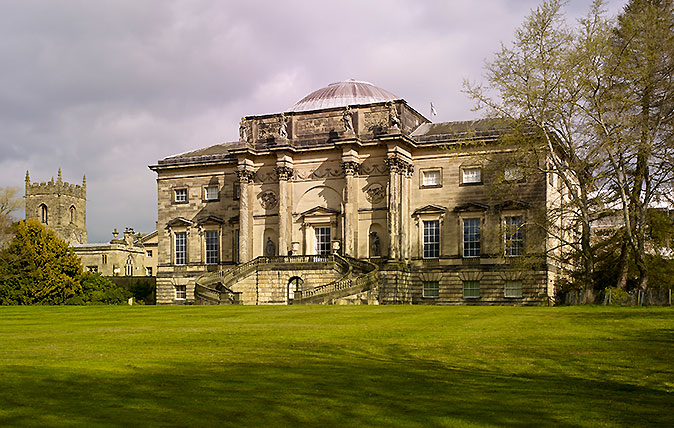
Kedleston seems such a perfectly preserved 18th-century ensemble that it is sobering to reflect on how much repair and restoration has been needed on the house, its park and contents since the National Trust secured it for the nation 30 years ago, assisted by grants from the National Heritage Memorial Fund and a public appeal. Major projects have included draining the lake, restoring the cascade and Fishing Room and re-roofing the east pavilion of the house.
Inside the building, the 12 state rooms on the piano nobile have now been restored, as far as possible, to their late-18th-century appearance. One of the highlights of this rolling programme was the drawing room, which was re-hung with a carefully researched replica of its original, powder-blue damask in 2002.
This was, in many ways, a dress rehearsal for the last and most recent phase of this work, the restoration of the State Apartment, a suite of four blue-damask-hung rooms on the west side of the house. Carried out between 2008 and 2017 and only unveiled this season, the results are a revelation.

Sir Nathanial Curzon, who inherited Kedleston in 1758, greatly admired Holkham Hall in Norfolk and, accordingly, brought in its architect, Matthew Brettingham, to superintend its design. Brettingham was soon supplanted by James Paine, who built the eastern half of the house, including the present drawing room.
He, in turn, was ejected by Robert Adam, who had first met Curzon in December 1758 and, cuckoo-like, eventually gained full control of the project by the spring of 1760.
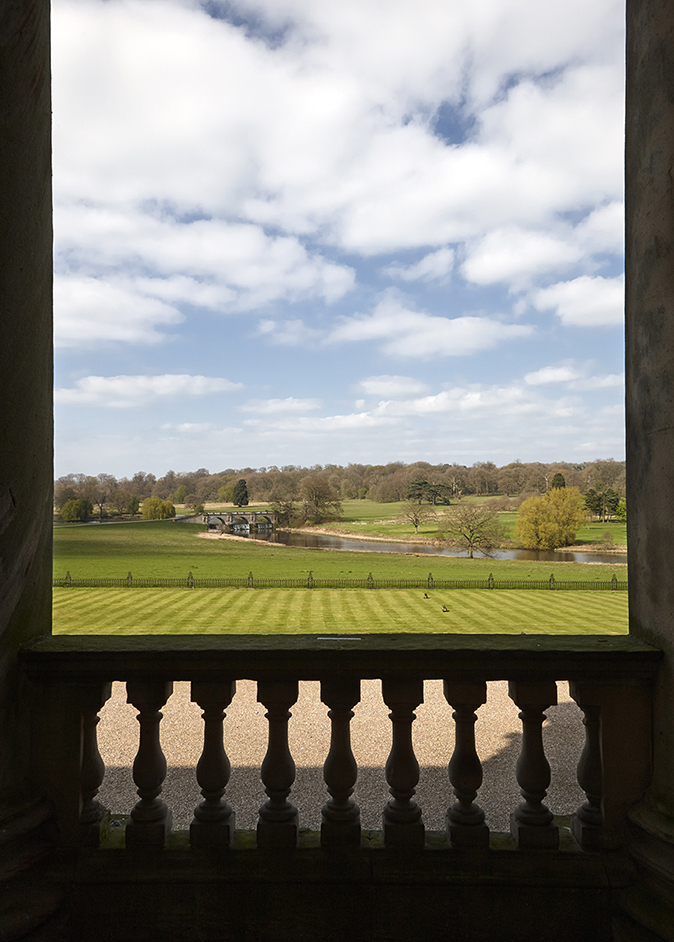
Adam vigorously remodelled Paine’s contributions and supervised the completion and decoration of the house, but his patron, Curzon – created 1st Baron Scarsdale in 1761 – clearly had ideas of his own. As a result, Kedleston is not a typical Adam house.
In a memorandum of 1763, Scarsdale planned to hang his drawing room with crimson velvet, but, by August 1766, the Duchess of Northumberland saw it ‘hung with very fine pictures on blue damask’. In addition, the 1769 guidebook to Kedleston records blue damask in the ante room, dressing room and state bedchamber that make up the State Apartment on the western side of the house. The same colour was subsequently used elsewhere, too, so that, eventually, five rooms were hung with the same coloured silk in a distinctly old-fashioned ‘pomegranate’ pattern popular about a decade previously.
Exquisite houses, the beauty of Nature, and how to get the most from your life, straight to your inbox.
Such a sustained sequence of blue rooms is unusual: 18th-century interiors more commonly delight in a variety of colour. The only difference between the blue fabrics used at Kedleston was that the drawing room was hung with a wool-and-silk mixed damask and the rooms of the State Apartment and the state bed were covered in all silk damask of the same pattern.
In this respect, the Kedleston hangings are consistent with contemporary usage – wall hangings got richer and more expensive as you progressed towards the state bedchamber, the culmination of the State Apartment.
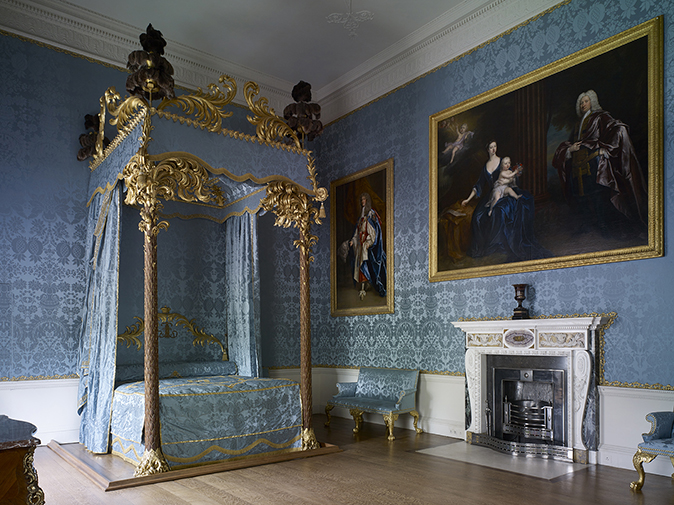
Although little was done to the state rooms at Kedleston immediately after the death of the 1st Baron Scarsdale in 1804, by 1870, it was necessary to remove the perished silk from the walls of the drawing room. The better-preserved sections of the silk were then used to repair hangings on the other side of the house.
In 1906, these were, in turn, replaced by new damask hangings, of a different pattern, and the drawing room – painted blue in 1871 – was again hung with silk in 1922, both being projects of the energetic George Nathaniel Curzon, later the celebrated Marquess Curzon of Kedleston and Viceroy of India.
Luckily, discarded patchwork sections of the old damask were made into dust covers and thus an archive of historic textiles was preserved in the house to inform the work of restoration. The 20th-century habit of leaving the shutters open eventually took its toll on Lord Curzon’s silk, which was replaced in 1977 by a pale-blue damask partly funded by the Historic Buildings Council. This also suffered from light exposure, so by the time the National Trust took over Kedleston Hall 10 years later, the drawing room and State Apartment were a pallid echo of their original appearance, being hung with a uniform linen and satinised cotton-mix damask, its colour flown to a washed-out greyish-blue.
Although the Trust has financed many of the restoration projects at Kedleston from its general fund, gifts, bequests and money enterprisingly raised by the property have also played a part. Most of the cost of restoring the State Apartment has been achieved from a bequest and from the location fees from The Duchess (the 2008 film about Georgiana, Duchess of Devonshire). However, by far the greatest expense – £80,000 to re-weave 1,500m (1,640 yards) of blue silk damask for hanging the walls and upholstering the bed and seat furniture – has been defrayed by money raised from the annual John Cornforth Memorial Lectures.
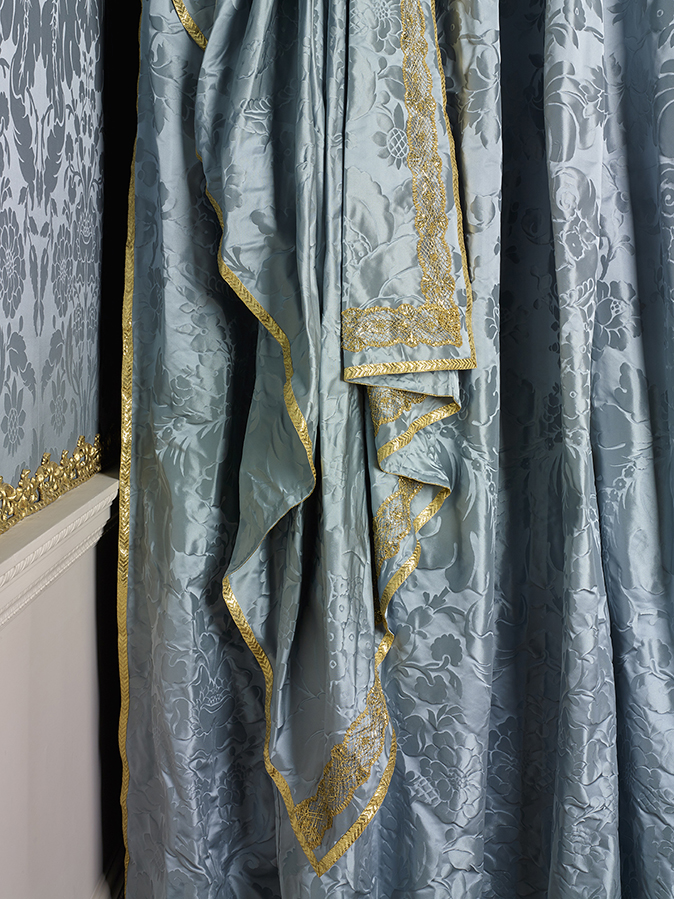
After the untimely death in 2004 of John Cornforth, Country Life’s Architecture Editor from 1966–1977 and the great authority on 18th-century decoration, a group of his admirers banded together to organise an annual lecture series in his memory. Every year, hosted and now organised by Christie’s, three country-house owners give a lecture about their respective houses. The proceeds from the lectures are devoted to projects nominated alternately by the National Trust and the Historic Houses Association (HHA).
The Trust has used these funds to re-weave Kedleston’s State Apartment silk and redecorate the staircase at Scotney Castle, another favourite Cornforth haunt; the HHA has deployed its funds on private houses open to the public.
Work began on the four rooms that comprise the State Apartment in January 2008, with a project team led by Kedleston’s Conservation Manager, Simon McCormack, and Andrew Barber, Curator, East Midlands Region.
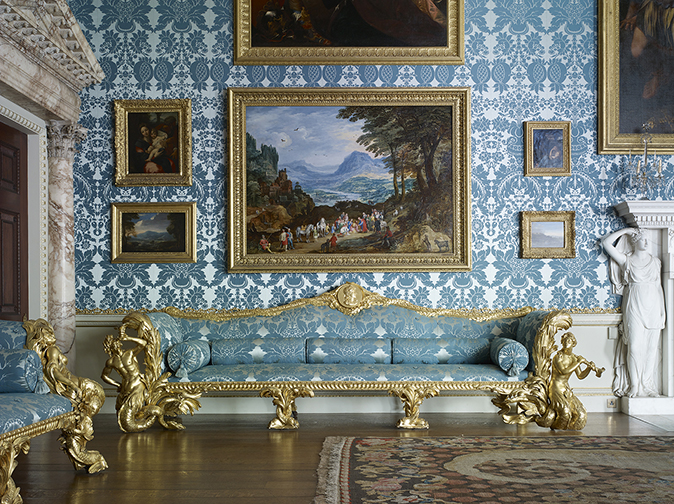
First, the ante room, dressing room, state bedchamber and wardrobe were completely emptied of their contents and the faded 1970s silk stripped from the walls. What survived of the 18th-century carved and gilded fillet that held it in place was carefully set aside. The rooms were repainted, following close analysis of the original colours, and the new blue all-silk damask, a careful copy of surviving fragments of the original, handwoven by the Humphries Weaving Co Ltd in Sudbury, was re-hung in the summer. The ornamental fillet was reinstated, missing portions being specially re-carved.
Once the walls were re-clothed, the Trust was able to return the original pictures – a combination of old family portraits and full-lengths of the Stuart kings that stress the antiquity and royal connections of the Curzons – to the rooms.
The repair of the furniture was entrusted to John Hartley of Tankerdale Workshops and Peter Thuring, who have worked on Kedleston’s interiors for decades. This included the repair of an extensive suite of giltwood chairs and settees made in about 1740 by William Bradshaw. Earlier than the house, they have always furnished the State Apartment and required re-upholstering with the new damask. Wherever possible, their original gilding was recovered and restored.
Also conserved – and also probably by Bradshaw – are the two extraordinary gilded mirrors with carved frames in the form of sprouting palm trees, complete with gnarled trunks and roots. These doubtless inspired the palm-tree theme of the huge, elaborately framed mirror in the state dressing room, the two matching pier glasses in the state bedchamber and a pair of palm-tree candle stands – all supplied by the carver James Gravenor in the late 1760s.

Gravenor also worked on the great state bed. It dominates the state bedchamber and is one of the outstanding essays in the palm-branch motif, the wet fronds springing from scaly tree trunks, which act as the bed posts, again emerging from gilded roots. A symbol of fame in classical mythology, palms denoted righteousness in the Bible and decorated the inner sanctum of the Temple of Solomon. They also possessed connotations of fertility and marital felicity.
The conceit probably derives from a scheme by Inigo Jones’s pupil, John Webb, who proposed a palm-fringed recess for the King’s bedchamber at Greenwich Palace in 1665, a theme later adapted in 1757 by John Vardy for the screen in the celebrated Palm Room at Spencer House in London.
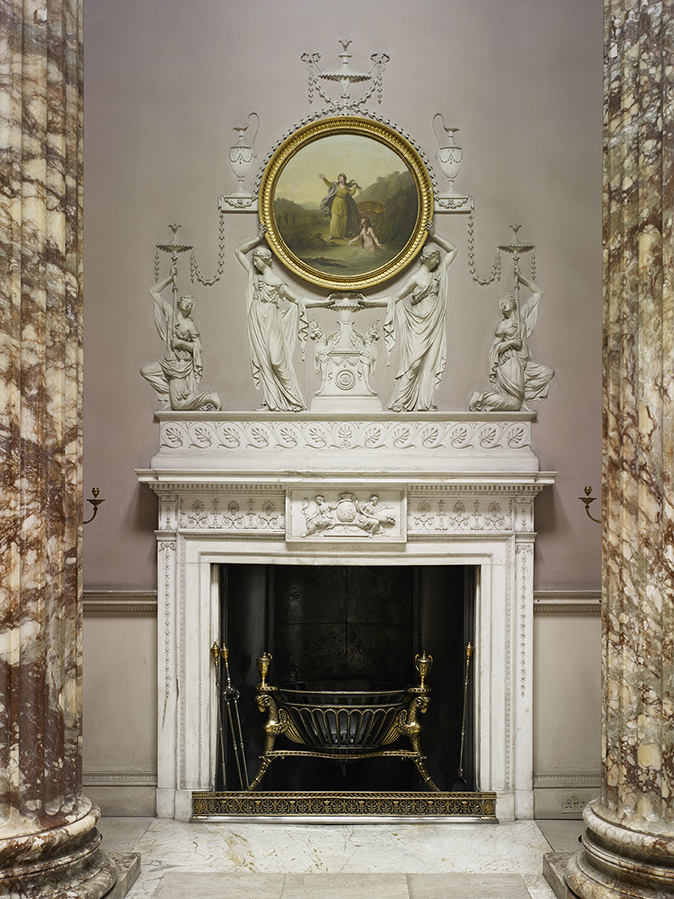
The restoration of the state bed was a particular challenge: although portions of the 18th-century silk damask, much faded and stained, survived on the inside of the canopy, and some of the gold-lace trimmings had survived, most of the hangings dated from the 1977 refurbishment and the carvings had been crudely repaired and rearranged. Indeed, as it was dismantled, it became clear that the bed was probably always something of a lash-up and not the work of a professional upholsterer.
It was conserved under the direction of Annabel Westman, an expert on state beds, and Tankerdale Workshops worked on the frame and carved elements. Zenzie Tinker Conservation in Brighton repaired the canopy, re-covering it with new silk, but retaining the remains of the original damask under protective layers of Japanese tissue. Satisfyingly, the job of re-creating the gold lace went to a local firm, Heritage Trimmings Ltd of Derby, which painstakingly re-created the woven braid on historic machines, making by hand the fringe, bobbin lace and rosettes.
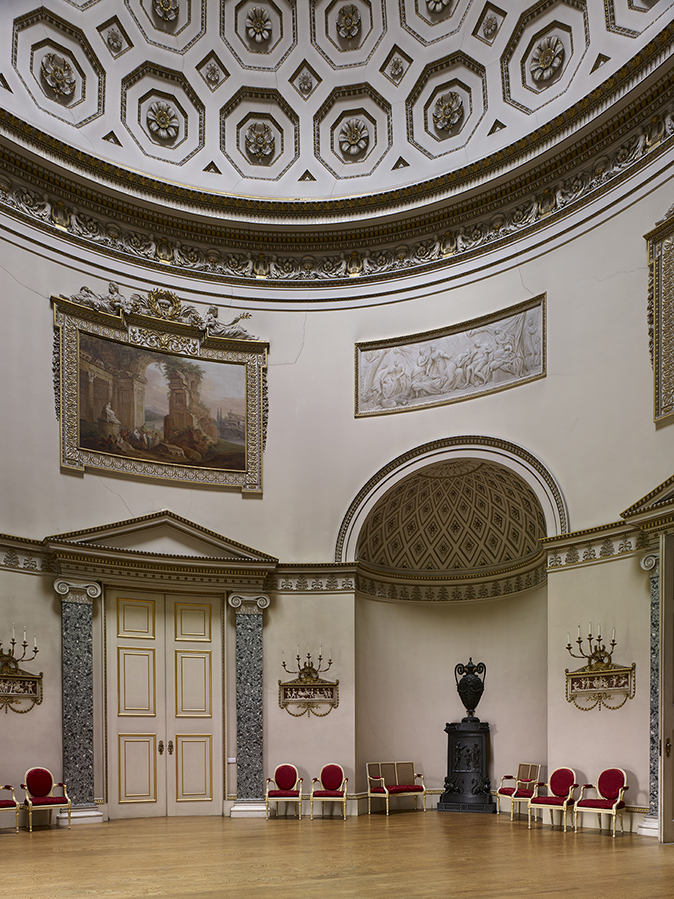
A final touch was the panaches of black ostrich feathers that surmounted the canopy. Much to everyone’s surprise, the gilded-metal feather holders turned out to be the originals, so were carefully cleaned and reinstated.
While the bed was away being conserved, Kedleston’s property team commissioned a replica interactive bed to stand in its place in order to explain to visitors what was being done. The basic silhouette of the bed was simply achieved in MDF and equipped with a comfortable mattress and sheets, so visitors could clamber onto it and view short films of the restoration process projected onto a screen incorporated into the canopy above them. This proved to be a huge success with visitors, and is probably the closest any of us will get to spending a night at Kedleston.
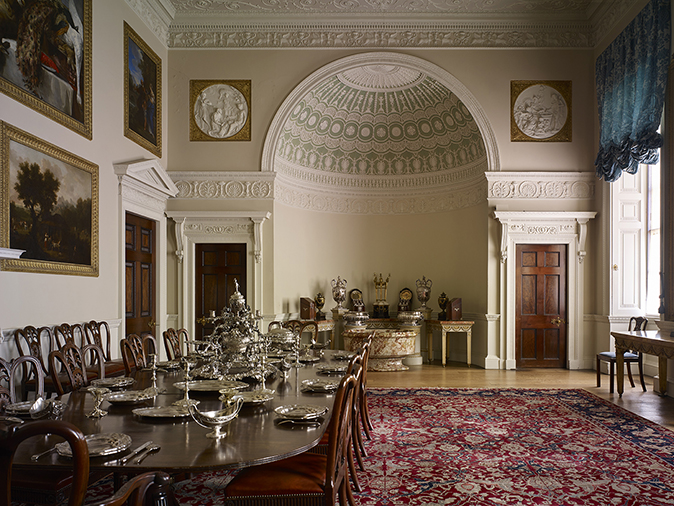
The return of the Scarsdale state bed, a towering mass of blue damask, crowned by gilded fronds and nodding plumes, is a major triumph, the culmination of a 10-year restoration project. It is perhaps fitting that the National Trust celebrates 30 years of sharing Kedleston with its visitors with the revival of this great symbol of Curzon splendour and hospitality.
For opening times to Kedleston Hall, Quarnby, Derbyshire, telephone 01332 842191 or visit www.nationaltrust.org.uk.
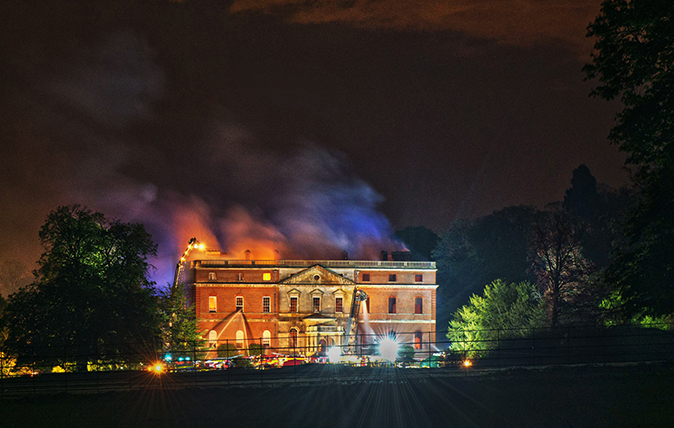
Clandon Park after the fire: The National Trust’s largest ever reconstruction project
Untangling the Gordian Knot.

How Oxford University's buildings evolved, and how its 'chiefest wonder' came into being
'Where is the University?' is the most common tourist's question in Oxford. The answer is rather complicated.
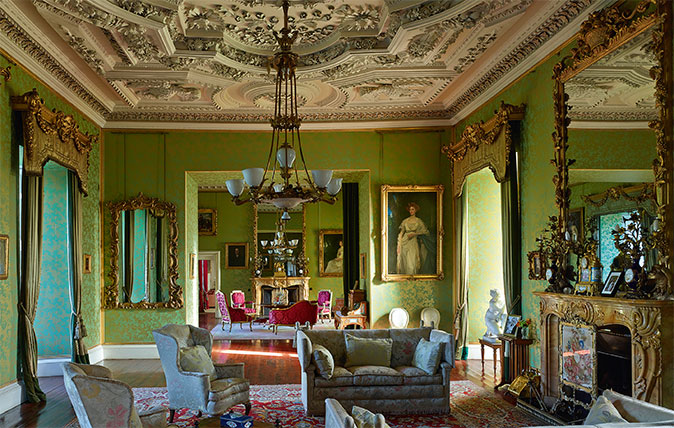
Credit: Thirlestane Castle in Berwickshire, photographed by Paul Barker
Thirlestane: A majestic 16th century castle being saved by heroic by 21st century efforts
Country Life is unlike any other magazine: the only glossy weekly on the newsstand and the only magazine that has been guest-edited by His Majesty The King not once, but twice. It is a celebration of modern rural life and all its diverse joys and pleasures — that was first published in Queen Victoria's Diamond Jubilee year. Our eclectic mixture of witty and informative content — from the most up-to-date property news and commentary and a coveted glimpse inside some of the UK's best houses and gardens, to gardening, the arts and interior design, written by experts in their field — still cannot be found in print or online, anywhere else.
